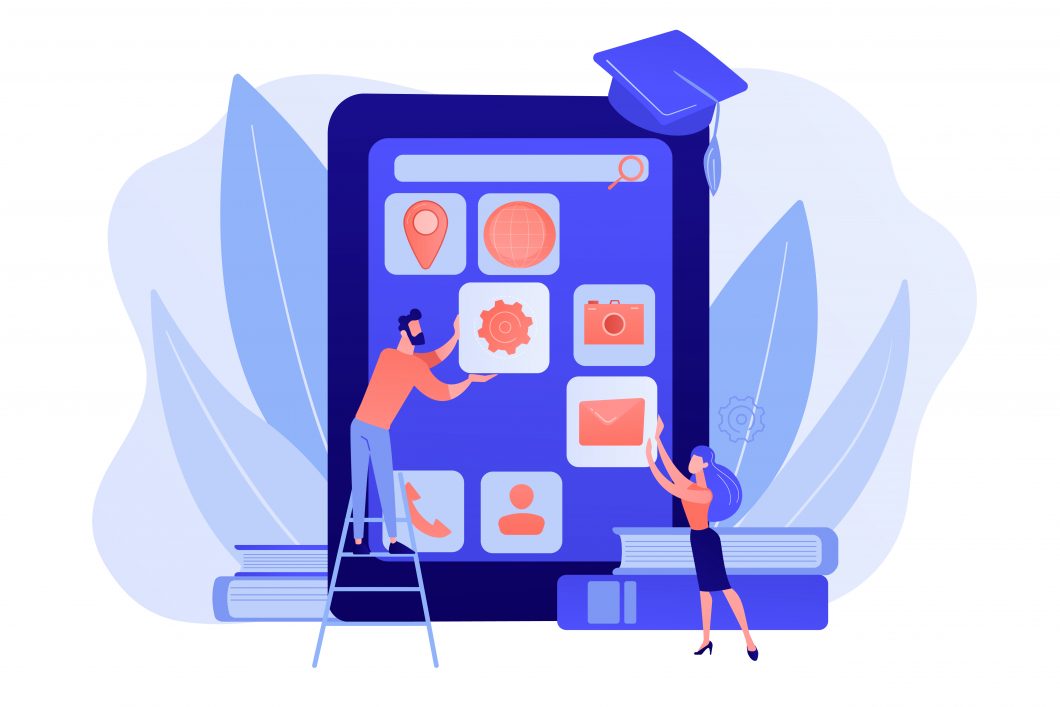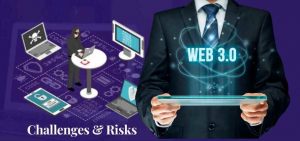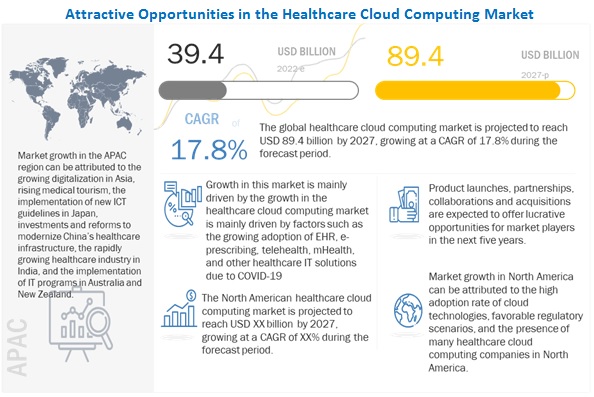
Telemedicine is a rapidly growing field transforming how healthcare is delivered. It involves using telecommunication and information technologies to provide medical services and expertise remotely. Telemedicine is not a new concept, but its widespread adoption was accelerated by the COVID-19 pandemic.
According to a report from a reputed source , despite the ongoing global geopolitical tensions and economic uncertainties, the global telemedicine services industry is anticipated to expand from $103.06 billion in 2022 to $262.33 billion by 2027, at a CAGR of 18.8%.
The above figures suggest that telemedicine is becoming more widely accepted, with insurance companies and government-regulated healthcare programs increasingly including telemedicine services in their coverage plans. As a result, governments are urging companies to modify their policies to incorporate telemedicine services into their schemes, recognizing the growing importance of this method of healthcare delivery.
The underlying concepts
The telemedicine services market encompasses a range of remote medical services, including teleneuropsychology, telenursing, telepharmacy, and telerehabilitation services, along with any related goods sold by the service provider. It leverages video chat, phone calls, and text messaging to provide medical services covering physical examinations and health concerns consultations.
The telemedicine concept is already followed extensively in economically-strong markets, including Asia-Pacific, North America, South America, the Middle East, Africa, Western Europe, and Eastern Europe. In 2022, North America emerged as the largest market for telemedicine services, with the Asia Pacific region coming in second.
……………………………………………………………………………………………………
Types of Telemedicine Services
There are various telemedicine services, including web-based, cloud-based, and on-premises.
- Web-based telemedicine services typically involve using a web browser to access an online platform for virtual consultations with healthcare providers.
- Cloud-based telemedicine services, on the other hand, leverage remote servers to store and manage patient data, offer remote consultations, and provide access to various medical tools and resources.
- On-premises telemedicine services refer to the delivery of remote healthcare services by healthcare providers using telecommunication and information technologies within the physical premises of a healthcare facility like a hospital or clinic.
……………………………………………………………………………………………………
Advantages of Telemedicine: Improving Healthcare Delivery
Telemedicine offers several advantages that can help healthcare providers improve healthcare delivery. Here are some of the key advantages
-
Increased access to healthcare
Telemedicine allows healthcare providers to deliver medical services to patients who might otherwise have difficulties accessing care, such as those living in rural or remote areas or patients with mobility issues or transportation challenges..
-
Improved patient outcomes
Telemedicine can facilitate early detection of health conditions by providing timely access to medical care. Artificial Intelligence (AI) plays a crucial role in providing personalized monitoring of chronic conditions and improving patient outcomes by enabling more data-driven care. AI can help in identifying patterns and predicting health issues before it intensifies, which can lead to early detection and treatment.
-
Cost savings
Telemedicine can help reduce healthcare costs by reducing the need for in-person visits, avoiding unnecessary hospitalizations, and improving medication adherence and disease management.
-
Convenience and flexibility
Patients can access medical care through telemedicine from the convenience of their own homes or workplaces, saving them time on travel and reducing the need to take time off work or school.
-
Increased efficiency
Telemedicine can help healthcare providers increase efficiency by enabling them to see more patients in less time, reducing wait times, and streamlining administrative tasks like medical record management and appointment scheduling.
……………………………………………………………………………………………………
Limitations of Telemedicine: Challenges to Overcome
Healthcare providers considering telemedicine services should be aware of the potential limitations and challenges that come with it. Here are some of the key challenges to overcome:
-
Technical Issues
One of the biggest challenges of telemedicine is technical issues such as poor internet connection, equipment failure, and software malfunctions. These issues can result in disrupted communication and delays in medical care, potentially compromising patient safety.
-
Privacy and Security Concerns
Telemedicine raises privacy and security concerns, particularly regarding the storage and transmission of patient health information. Healthcare providers must ensure that telemedicine platforms follow the Health Insurance Portability and Accountability Act (HIPAA) and other regulations to protect patient privacy.
-
Limited Physical Examination
Telemedicine may not allow healthcare providers to conduct a comprehensive physical examination of patients, which can limit their ability to diagnose and treat certain conditions. For instance, some conditions may require a hands-on approach to diagnose and treat effectively.
-
Lack of Patient-Provider Relationship
Telemedicine may not provide the same personal connection between patients and healthcare providers as in-person visits. This can limit the ability of healthcare providers to establish a strong patient-provider relationship, which is crucial for effective medical care.
-
Inability to Handle Emergencies
Telemedicine may not be able to handle medical emergencies such as cardiac arrest or severe trauma, which require immediate and specialized medical attention. Patients in need of emergency medical care must seek medical attention in person.
-
Unequal Access to Technology
Unequal access to technology can limit the use of telemedicine, particularly among low-income and rural populations. Lack of access to the internet and appropriate devices can create disparities in healthcare access.
-
Licensing and Reimbursement
Telemedicine is subject to licensing and reimbursement regulations, which can vary by state and insurance provider. This can create challenges for healthcare providers in delivering telemedicine services and obtaining payment.
……………………………………………………………………………………………………
Conclusion
Telemedicine offers several advantages in improving healthcare delivery, from increased access to healthcare to increased efficiency. However, healthcare providers must overcome telemedicine challenges to provide high-quality services to their patients. To overcome these limitations, healthcare providers can invest in reliable technology and collaborate with subject matter experts to make the most of this technology.
Mindfire Solutions is a software development company that has been assisting healthcare providers for 15+ years to better their services with the help of cutting-edge technologies. Our team specializes in modern healthcare tech stacks and provides custom solutions that enable stakeholders to optimize their workflows and enhance patient care outcomes.
Visit Mindfire Solution to learn more about us.
 Embedded finance, often referred to as embedded banking, falls under the banking as a service (BaaS) segment. It refers to the integration of financial services such as insurance, loans, debit/credit cards, investments, etc. into the traditional, non-financial sector. Simply put, it is the process of non-financial entities integrating financial services or products into their own platform, using APIs.
Embedded finance, often referred to as embedded banking, falls under the banking as a service (BaaS) segment. It refers to the integration of financial services such as insurance, loans, debit/credit cards, investments, etc. into the traditional, non-financial sector. Simply put, it is the process of non-financial entities integrating financial services or products into their own platform, using APIs. Financial technology or fintech is a burgeoning industry that seeks to make financial systems more efficient and accessible for all users. With the increased demand for faster transactions and greater security, leading-edge technologies like blockchain are gaining fast adoption. Through the use of decentralized networks, blockchain-based fintech apps, also known as decentralized finance or (DeFi) apps, are providing a secure and efficient platform for users to transact.
Financial technology or fintech is a burgeoning industry that seeks to make financial systems more efficient and accessible for all users. With the increased demand for faster transactions and greater security, leading-edge technologies like blockchain are gaining fast adoption. Through the use of decentralized networks, blockchain-based fintech apps, also known as decentralized finance or (DeFi) apps, are providing a secure and efficient platform for users to transact.

 It’s no secret that the world of technology is ever-evolving. From Web 1.0 to the current climate of Web 2.0, new platforms and technologies have revolutionized how we communicate, create content, share ideas, and even buy products. But what does this all mean for the next wave – Web 3.0?
It’s no secret that the world of technology is ever-evolving. From Web 1.0 to the current climate of Web 2.0, new platforms and technologies have revolutionized how we communicate, create content, share ideas, and even buy products. But what does this all mean for the next wave – Web 3.0?


